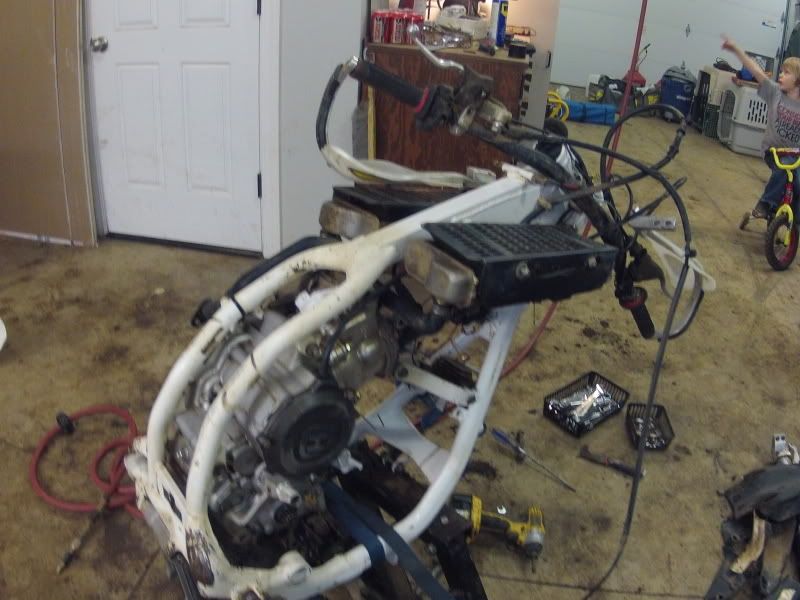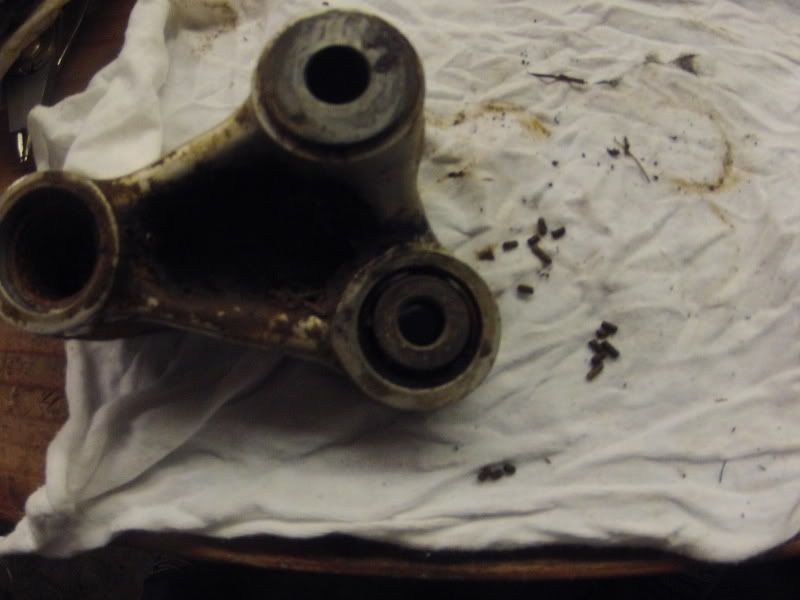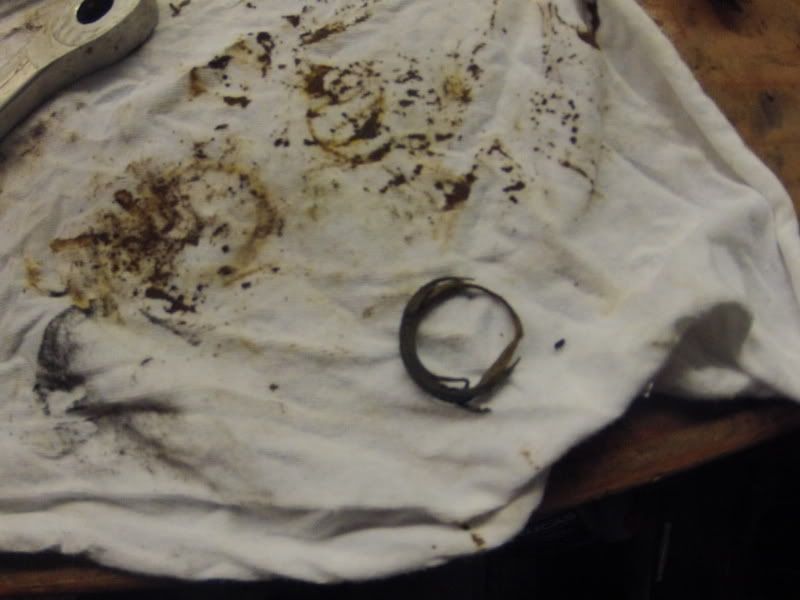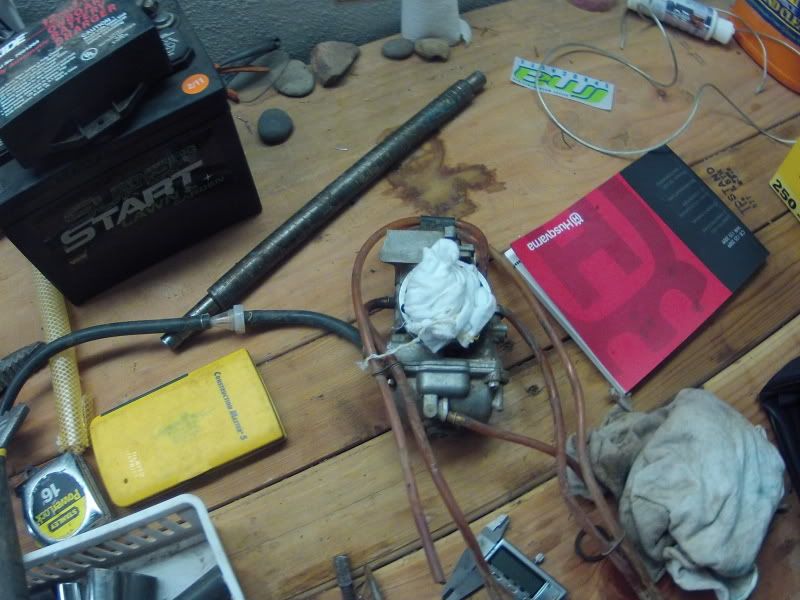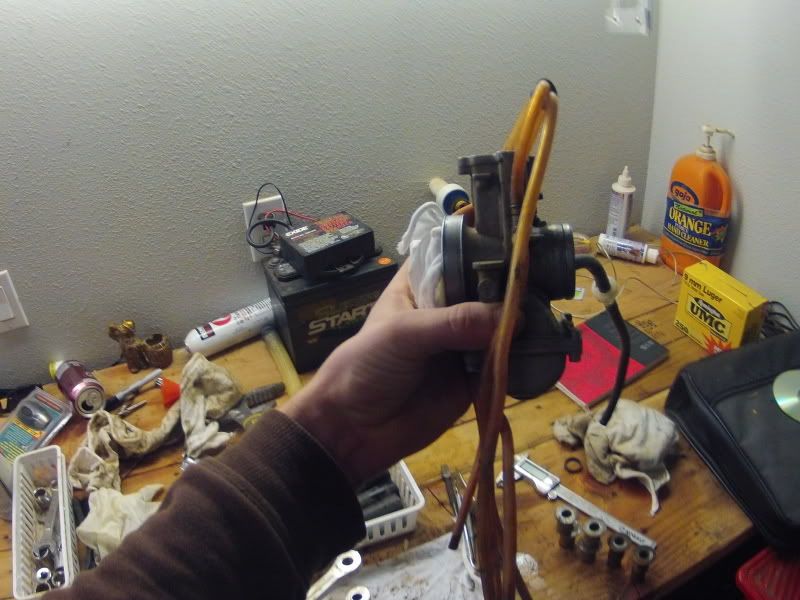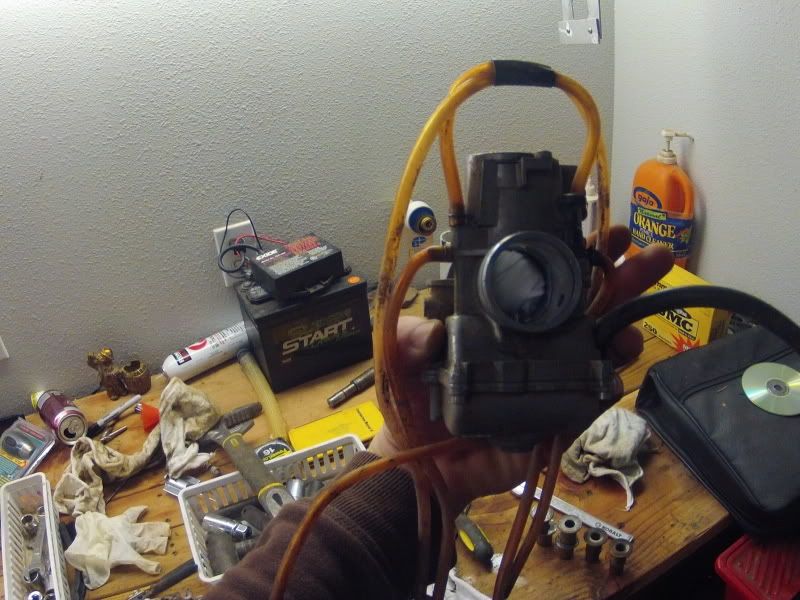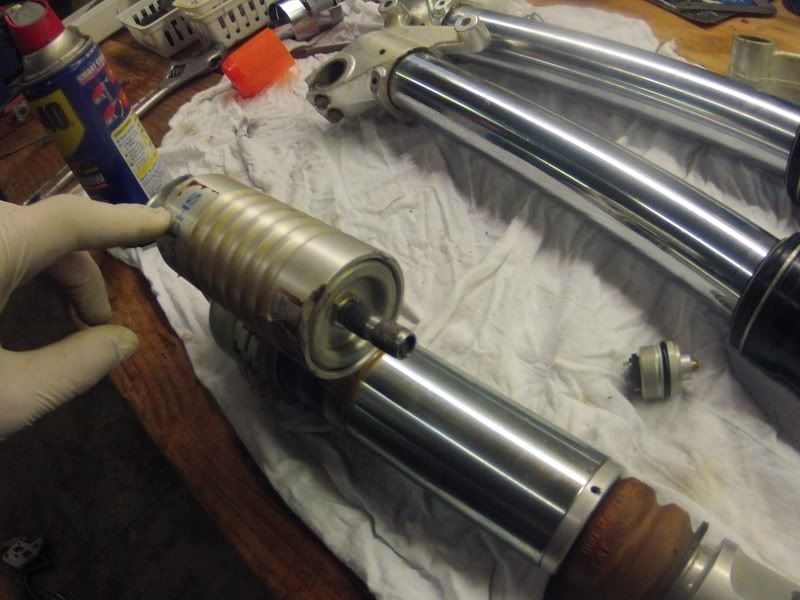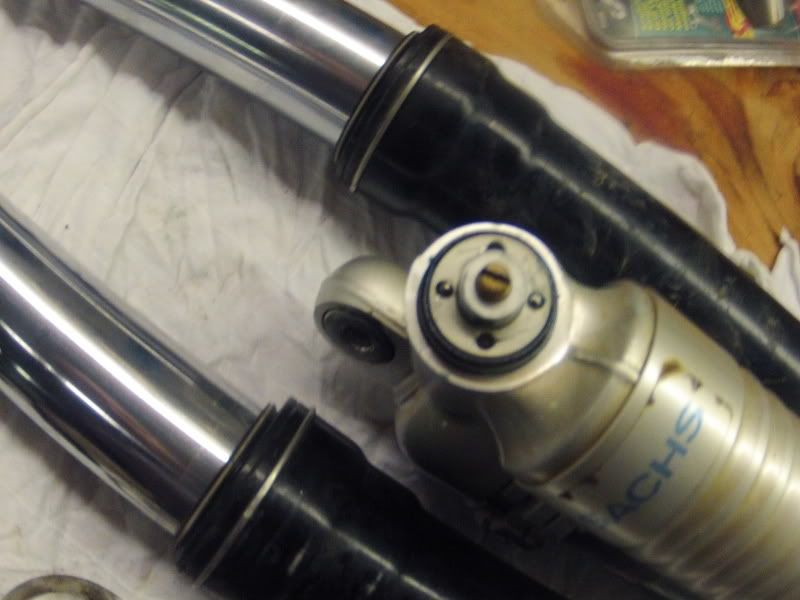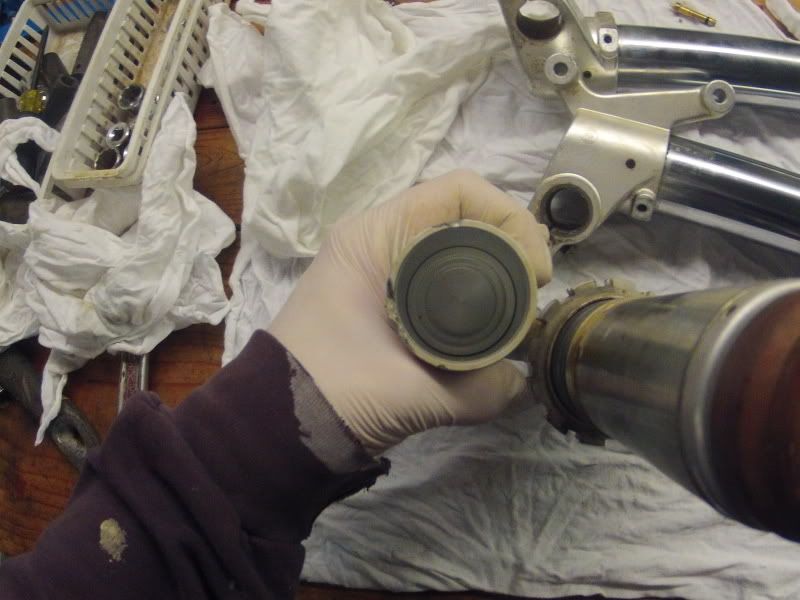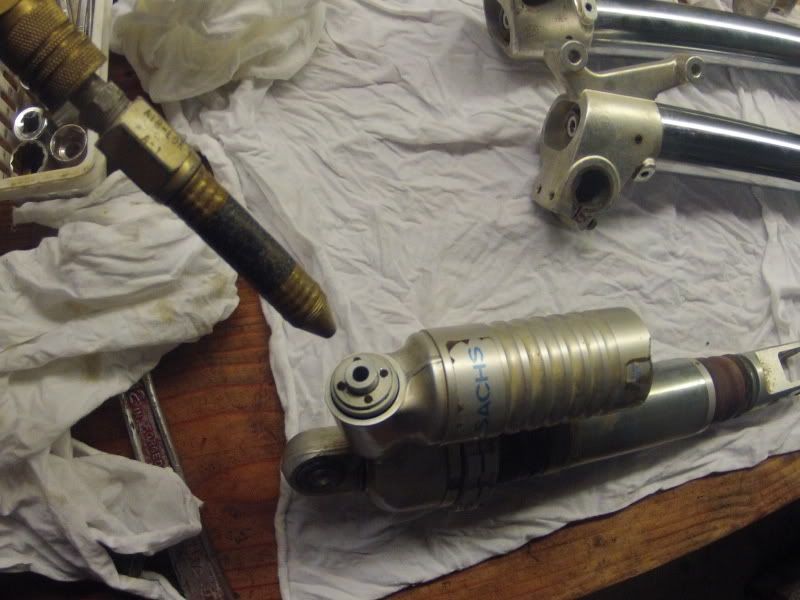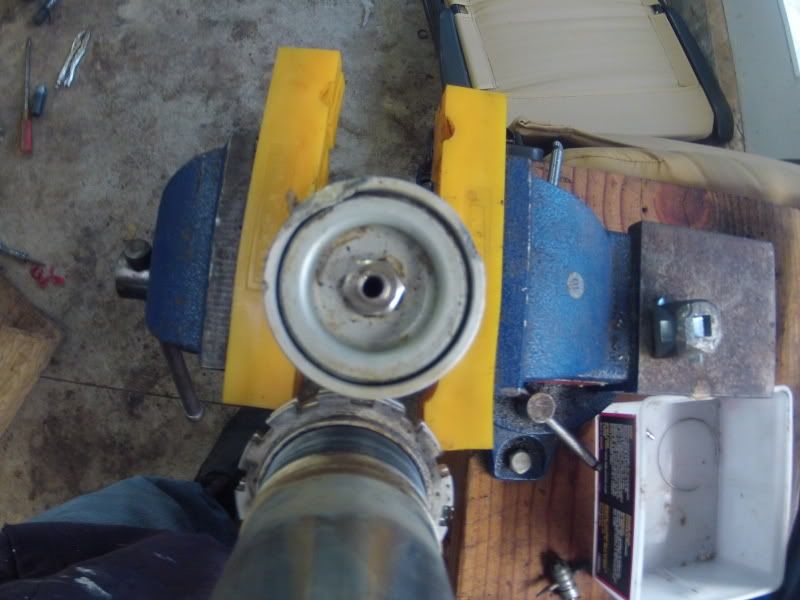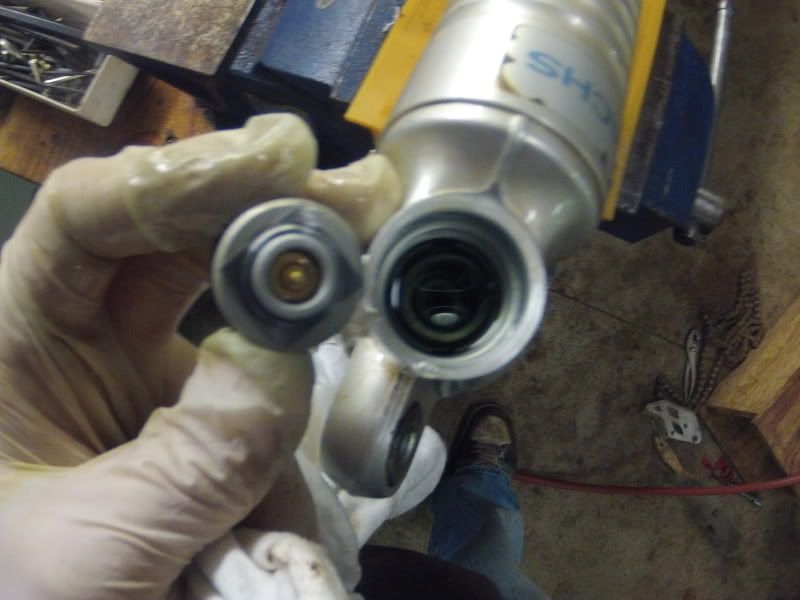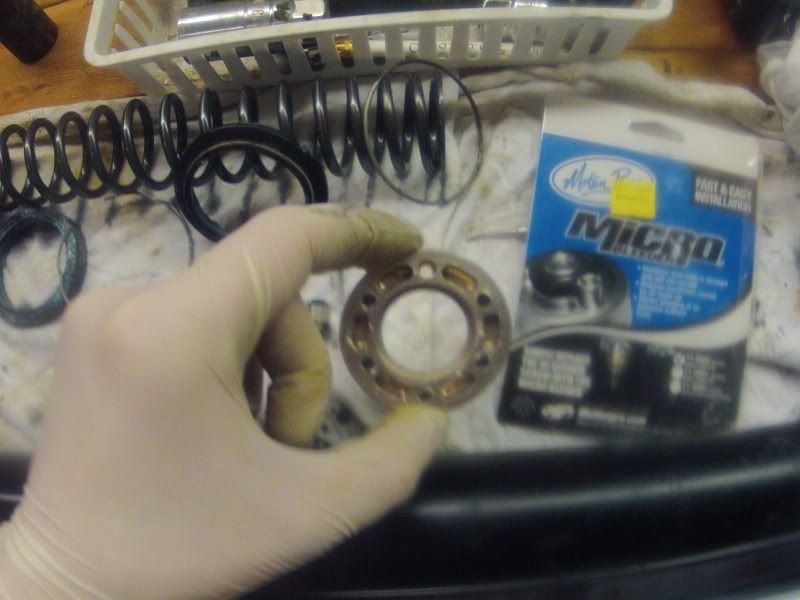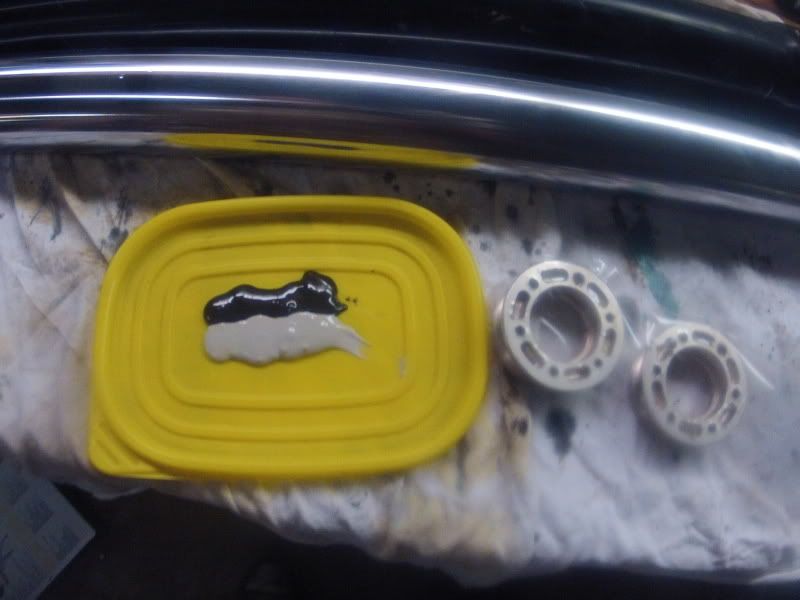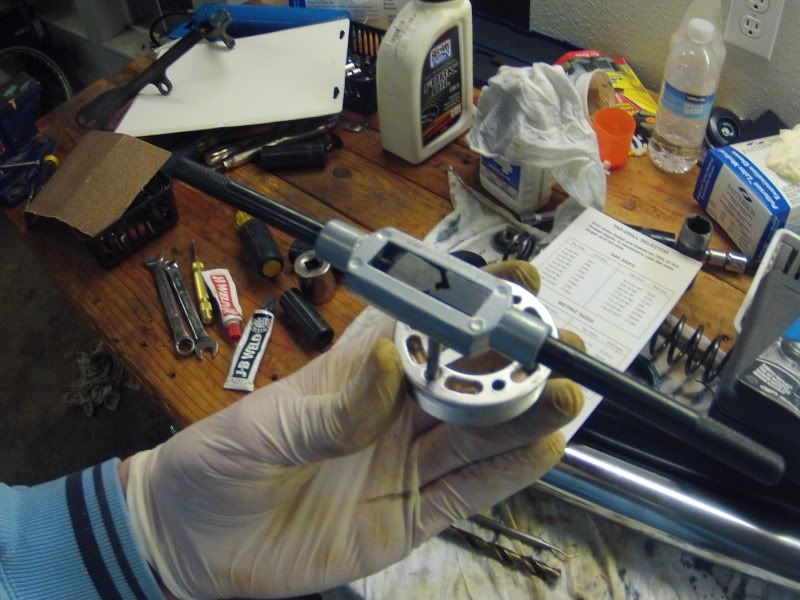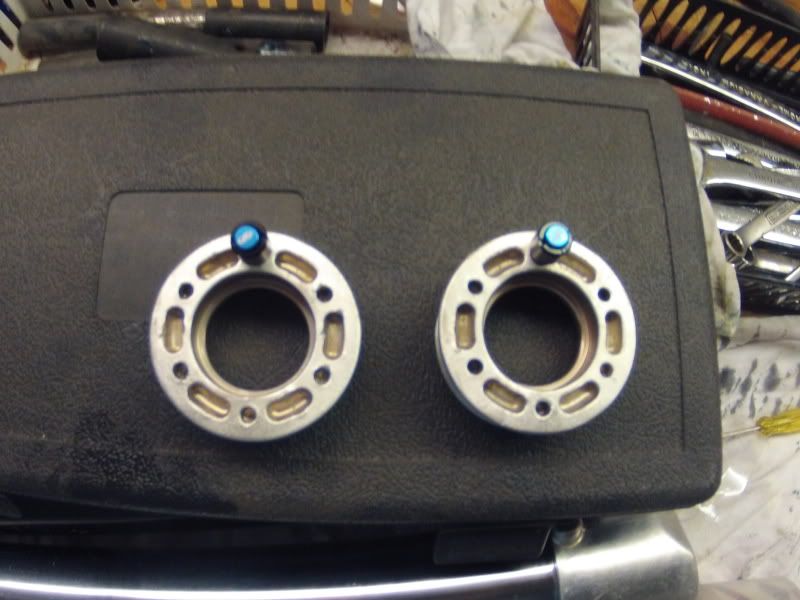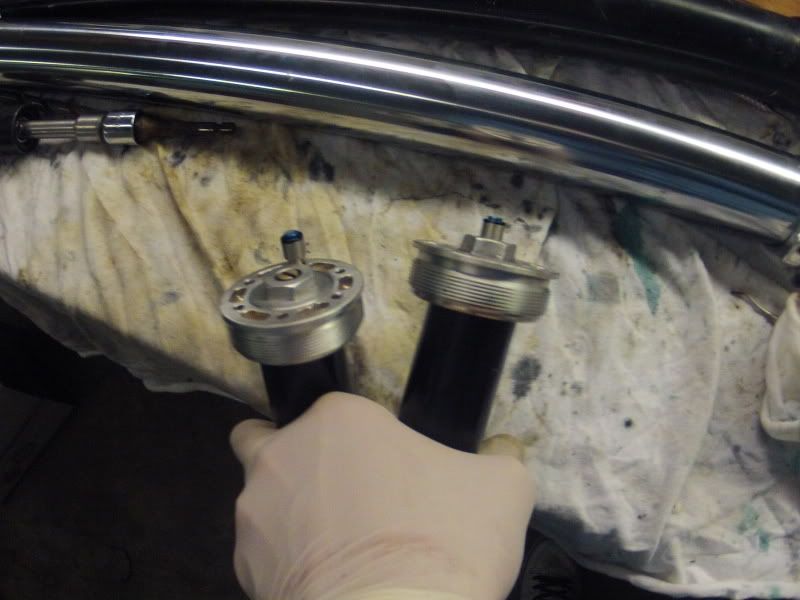Since this bike is semi-new to me, I have no idea how long it's been since the shock has been serviced... Decided to give it a whirl. I've done it to the Showa on my 450, but this is just a little bit different. I'm no suspension guru by ANY means... I just came across a couple of head scratchers, and want to give a couple of hints to people that are thinking about doing this themselves... It really is pretty easy. Messy, but easy.
Don't forget to count where your clickers are at for high speed, and low speed compression, and also the rebound. Then turn them all the way soft before you start.
After you have the spring, etc, off deflate the nitrogen chamber, then remove the valve stem. Use your fingers, and push the cylinder down into the chamber, to expose the circlip that was holding it in place. Remove the circlip.
Flip your valve stem remover over (or use somthing else) and screw it on the threads of the valve stem, and pull to remove the
Grab a small allen wrench, and loosen the set screw on the side of the low speed compression, and remove the knob. Be VERY careful, there are two tiny Stainless Steel balls under this cap, sitting on tiny springs. Do not lose these!! They are what give the "clicking" action when you turn it. Remove them and set them aside.
Get a spanner wrench (or needle nose pliers) and put them in the holes in the cap and turn lefty loosey to remove the cap. It is very important you have deflated the nitrogen, and have the shock fully extended to remove the internal pressure.
Now flip over and pump the shaft (ya I said it) while draining the oil.
Notice in the nitrogen chamber, there is still a piston stuck in there??
I wanted to remove it (to know what it looks like, and clean under it if necessary). Here is an easy way to get it out. Take the cap you just removed, and turn the brass clicker screw all the way in, and screw it right through the cap. BE CAREFUL, there is another little ball / spring in this one too...
Set this clicker screw aside, and re-install the cap finger tight. Put something over the bottom of the chamber (like a rag), and give it a LITTLE bit of air through the clicker hole. It only takes a little to send that piston flying across your garage. No, it didn't happen to me this time.
If your shock was leaking, you probably need to pull the main valve stack/piston from the shock, and replace some seals. I won't get into that here..
Once your ready to stick it all together, put the piston back in the nitrogen chamber. A little grease on the o-rings never hurt. Push the piston all the way in, so when you pump some air in it, it doesn't SLAM against the top.
Then push the cap back in far enough to get the circlip back in place, once again, grease is good! Once the circlip is installed, pull the cap back against it, to again, avoid slamming. Put the valve stem back in place, and pump around 40psi into the chamber.
Flip it over, and pour your prefered oil in, and go through the bleeding process. Lots of shaft pumping here...
Put that brass clicker screw and little spring/ball back in the needle, and re-insert into compression cap.
Here is where I got stuck for 30 minutes, so pay attention....
On the bottom of the compression cap, there is a square plate that is attached to the low speed compression shaft, and it has to mesh with 4 notches that are down in the threads the cap seats in. If not, the cap will not seat all the way in.
It requires you to screw the cap in, while keeping the low speed compression shaft still, and not rotating it with the cap as it screws in. This can be tricky, but once you get it, the cap will seat like this, and the low speed compression shaft will turn freely.
I put a little grease on the springs, and stainless balls that go in the compression cap, to hold them in place while I put the thumb screw, and set screw in place.

